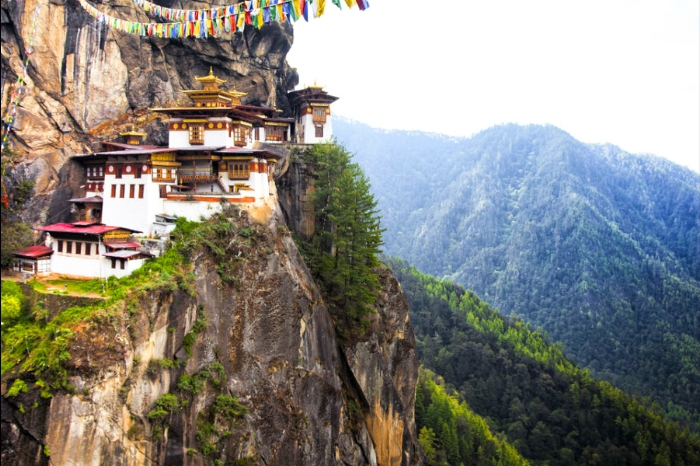- 12 Nov, 2025

Beyond Tokyo: Discover Japan’s Rural Heritage And Traditions
Japan is renowned for its modern advancements, as well as for its preservation of its rich cultural heritage. With the coming generations, there were signs that the culture might be swept away. Still, they have deeply ingrained ancestral and historic values in every corner of Japan, so that, despite the changes brought about by modernity, Japanese culture remains the main factor shaping their lives. It is a deep and dynamic society with a thousand-year history of arts, crafts, and geographical relevance, as well as traditions. When people plan their visit to Japan, they not only want to see the hubbub and glamour of Tokyo but also the serenity of the countryside places that breathe traditions and culture. To make a list of the countryside places of Japan, you can use this post and also save it for your Japan trip.
Gusuku Sites
The Gusuku Sites and the other properties there have been awarded as a UNESCO World Heritage Site. All the sites present there can be located in the Okinawa Prefecture, Japan. These nine sites include temples, gardens, monuments, and castles. Read more about Gusuku Sites below:
Places to visit: Shuri Castle, Nakijin Castle, Katsuren Castle, Zakimi Castle, Nakagusuku Castle, Tamaudun Mausoleum, Sonohyan-utaki Stone Gate, Shikinaen Garden, Sefa-utaki.
Food and Drinks: You can try Okinawa Soba, Taco Rice, Agu Pork, or fresh fruit drinks and beers.
Events: Nakijin Gusuku Cherry Blossom Festival, Suga Shrine Annual Grand Festival, and Inarikio Shrine Chinka Festival.
Historic and Cultural Significance: Gusuku Sites hold great relevance because it has traces of the Ryukyu Kingdom. This location played a crucial role in facilitating trade with East Asia.
Iya Valley
Iya Valley is one of the most beautiful places in Japan. It offers tourists scenic views of gorgeous vines and bridges. People enjoy it for the culture and also the adventurous activities. Read the points below to know more.
Places to visit: Iya Kazurabashi Vine Bridge, Oku-Iya Double Vine Bridges, Oboke and Koboke Gorges, Buke Yashiki Samurai, Ochiai Village, Nagoro, and Chiiori Farmhouse.
Food and Drinks to try: When you are at Iya Valley, you should try Amego, Ayu, dense, stone tofu, Iya Soba, Dekomawashi, and Hirara-yaki with sake-based broths.
Events: Oku-Iya Harvest Festival takes place around November. If you are visiting at any other time, you can participate in outdoor adventures, sightseeing, Hot Springs, and Art and Nature walks.
Historical and Cultural Significance: The Iya Valley served as a refuge for the defeated samurai during the Genpei War.
Kanazawa
Kanazawa, also known as the Little Kyoto, is the capital of Ishikawa Prefecture. It boasts numerous significant sites, renowned for its rich culture, artistic heritage, and history.
Places to visit: Kenrokuen Garden, Omicho Market, Higashi Chaya District, Myoryuji Temple, Nagamachi Samurai District, Kanazawa Castle Park, Gyokuseninmaru Garden, Yuwaku Onsen, Kanazawa Station, Kaikaro Teahouse, D.T. Suzuki Museum.
Food and Drinks to Try: Kanazawa is famous for its seafood, including sushi, Kaisen-don, Kanazawa Curry, Jibuni, and Kabura-Zushi. For dishes other than that, you can try Kanazawa Curry, Jibuni, Kabura-Zushi, Noto Beef, Gold Leaf Ice Cream, Kano-Gani, and Hunton Rice.
Events: Kanazawa Hyakumangoku Festival, Eve Festival, Eianji Temple Aizen Fire Festival, Hokkoku fireworks, Ono Hiyoshi Shrine Festival, Kenroku-en Garden Four Seasons Story, Kanazawa Asanogawa Enyukai Kawadoko
Historical and Cultural Significance: Kanazawa was founded during the Edo Period in Japan. The Maeda Clan ruled the Kaga and brought with it the arts and crafts. It was later made the political, economic, and cultural center and remained for 300 years.
Kiso Valley
Kiso Valley is located in the Nagano Prefecture and holds significance from the Edo Period of Japan. It is next to the mountains of the Central Alps. Many towns in the valley feature wooden buildings and stone streets, preserving their cultural heritage through architectural means. Read about the Kiso Valley below:
Places to visit: Tsumago, Nakasendo, Magome, Narai, Nakasendo Trail, Kozenji Temple, Kiso-Fukushima, Takamori Castle Ruins, Nezame-no-Tokyo Gorge, and Mount Ontake.
Foods and Drinks to Try: At the Kiso Valley, be sure to try the fresh river fish and local specialties, including Soba Noodles, Gohei Mochi, Oyaki Dumplings, Kiso Beef, Hoba Maki, and Sunki Pickles.
Events: Magome Cherry Blossom Festival, Tsumago Summer Festival, Kisoji Ice and Snow Light Festival, Narayuku Shizume Shrine Grand Festival, and Unnojuku Fureai Festival.
Historical and Cultural Significance: During the Edo Period, the Kiso Valley served as a vital trail connecting Kyoto and Edo.
Conclusion: By reading this article, you will learn how Japan has preserved its culture in rural locations and how it utilizes nature, architecture, location, and food to disseminate it across the country. If you want to know Japan from its core and what it has to offer tourists beyond Tokyo, then this post is for you. You should plan your Japan Trip as soon as possible and make an itinerary by using the list of places above.
Contact us







Contact us

Dial In for Bigger Savings: Exclusive Deals!